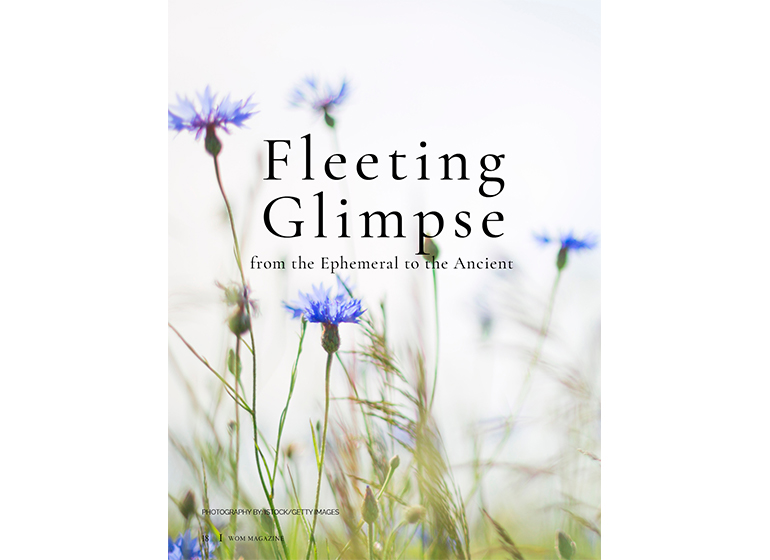
Fleeting Glimpse
from the Ephemeral to the Ancient
An ephemeral plant is one marked by short life cycles. The word ephemeral means transitory or quickly fading and when speaking of plants, this term specifically refers to distinct growth strategies that allow a plant to thrive
at the points where its essential resources, such as sunlight or rainfall, are readily available.
One of the shortest-lived plants in the world is the Arabidopsis Thaliana (a mustard relative), which has a seed-to-seed lifespan of about a month. A plant that is easy to grow indoors, the rapid generation time, diminutive proportions, and self-pollination has made the Arabidopsis a model organism for genetic experiments and is the most studied of all flowering plants.
Beyond the lab, it is the first spring ephemerals, the wild perennials that can be some of the shortest-lived, or more accurately the shortest visible above ground in the UK. Their lifecycle is designed to take full advantage
of the additional sunlight of the early spring season, when the branches of its larger, deciduous neighbors are still bare, blooming and producing seed before being overshadowed later in the year.
On the other end of the spectrum are the ancient trees, the longest-lived plants in the UK. As different types of trees age at different rates, to be classified as ‘ancient’, the tree is compared to other members of its species.
For oaks it takes around 400 years to wear this accolade, however, yew trees must be around 800 to 900 years to qualify. The Fortingall yew, located in a churchyard in Perthshire, Scotland, is considered to be the oldest yew in the UK between 2,000 and 3,000 years old, some even believe it could be up to 5000 years old.
With their characteristic wide, complex, and often cavernous trunks, ancient trees are vital to the survival of rare and specialist wildlife, providing food and habitat to insects, fungi, birds, and mammals.


